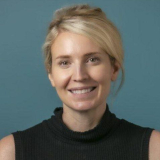From PharmExec.com
Tracing biopharma’s innovation evolution—and, framed by COVID-19 and the med-tech boon, a look at four notable efforts focused on that one elusive constant: translational value.
A trillion-dollar industry whose members once practiced “not-invented-here syndrome” with near-religious fervor have now, for the most part, embraced on a formal scale what critics long wanted it to do: Seek and find innovators. Don’t, they had said, let a project fail just because a critical widget for said project didn’t exist in-house—go source it elsewhere.
The biopharmaceutical industry’s innovation discovery methods have gone from the long-established (the Biotechnology Innovation Organization [BIO]is 28 years old1), to seeding promising technology platforms, to supporting brick-and-mortar innovation centers. For example, AstraZeneca and GlaxoSmithKline are underwriting a new structure in Edinburgh, Scotland.
...
The spitfire, communal development of the Pfizer and Moderna vaccines is a clear sign that cooperation among all interested parties must continue, says Tiffany Wilson, president and CEO of the University City Science Center (UCSC) in Philadelphia. The center’s 11-year-old QED program (QED stands for quod erat demonstrandum, latin for “proven as demonstrated”), which only takes academic applicants from area universities, provides researchers who have novel ideas with real-world advice and assistance.
Wilson acknowledges that it took little time for the COVID vaccines to reach FDA’s doorstep, but in reality, they were in development for a long time. Researchers worked round the clock, and, in some cases, were spared from worrying about funding because the NIH was picking up the tab. These were extraordinary circumstances.
“In the future, people won’t stay up for 24 hours, there will not be billions of dollars [of available NIH money], so we need to bring different people into the sandbox to turn out promising products,” adds Wilson.
...
In the future, people won’t stay up for 24 hours, there will not be billions of dollars [of available NIH money], so we need to bring different people into the sandbox to turn out promising products
